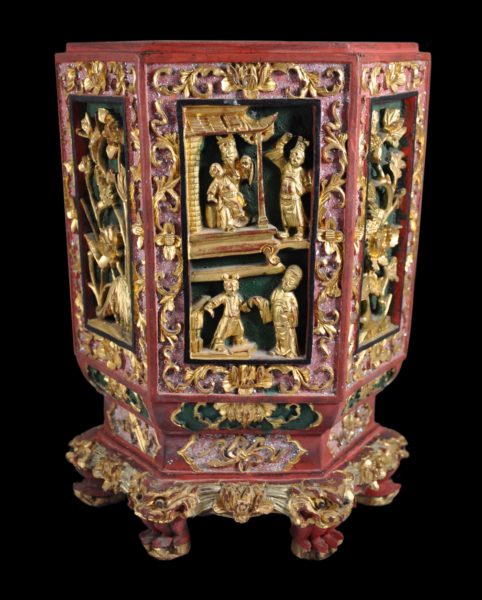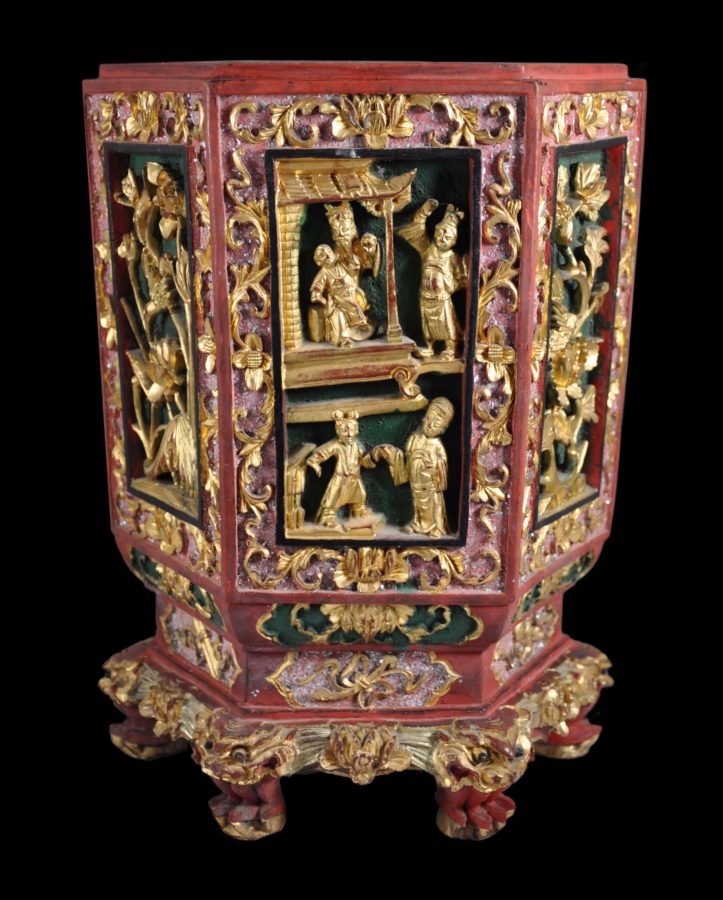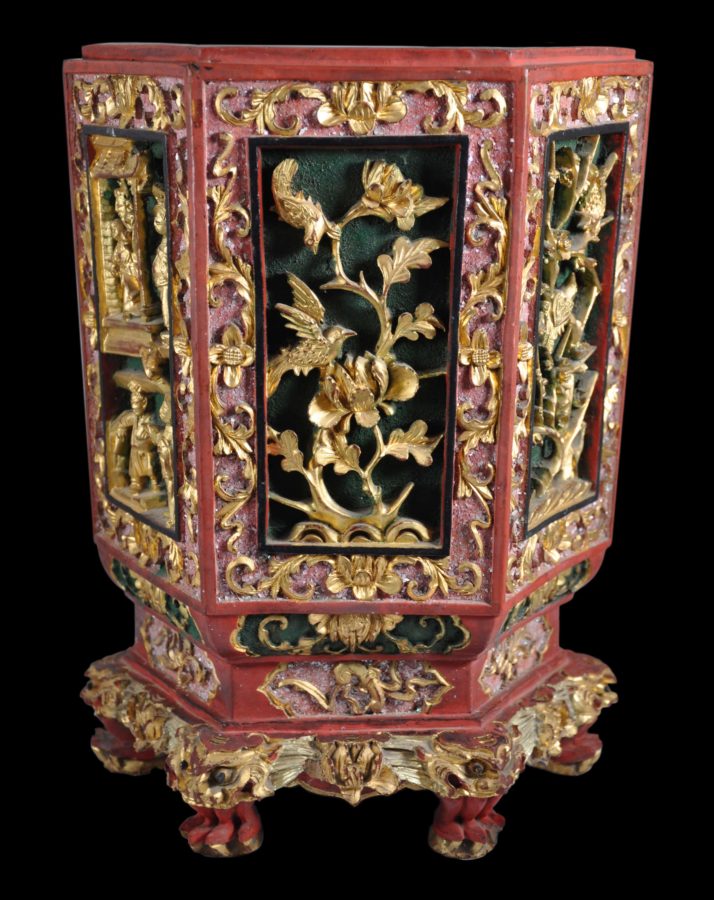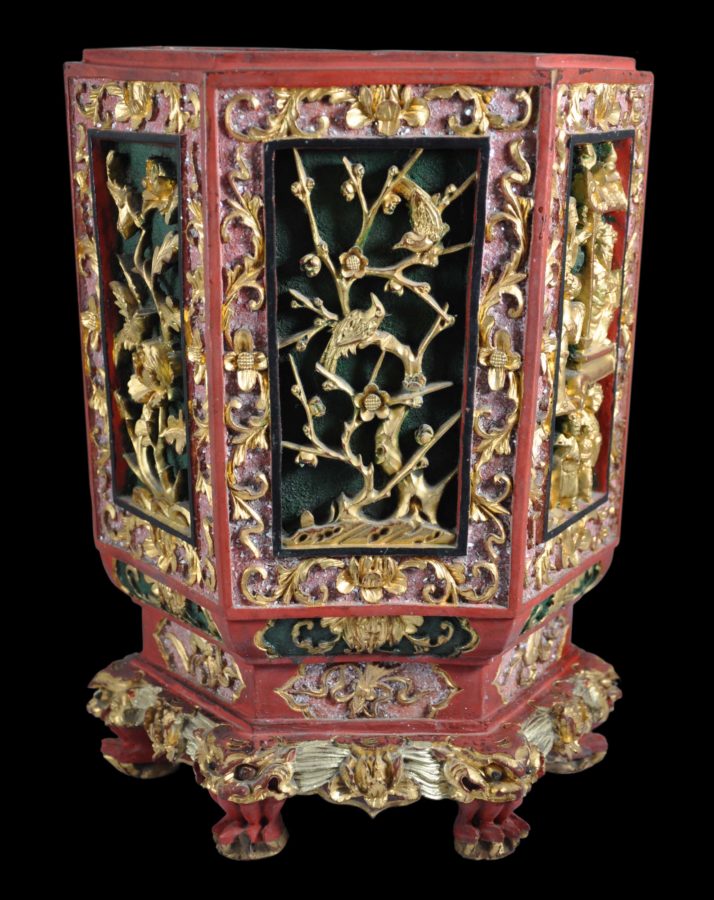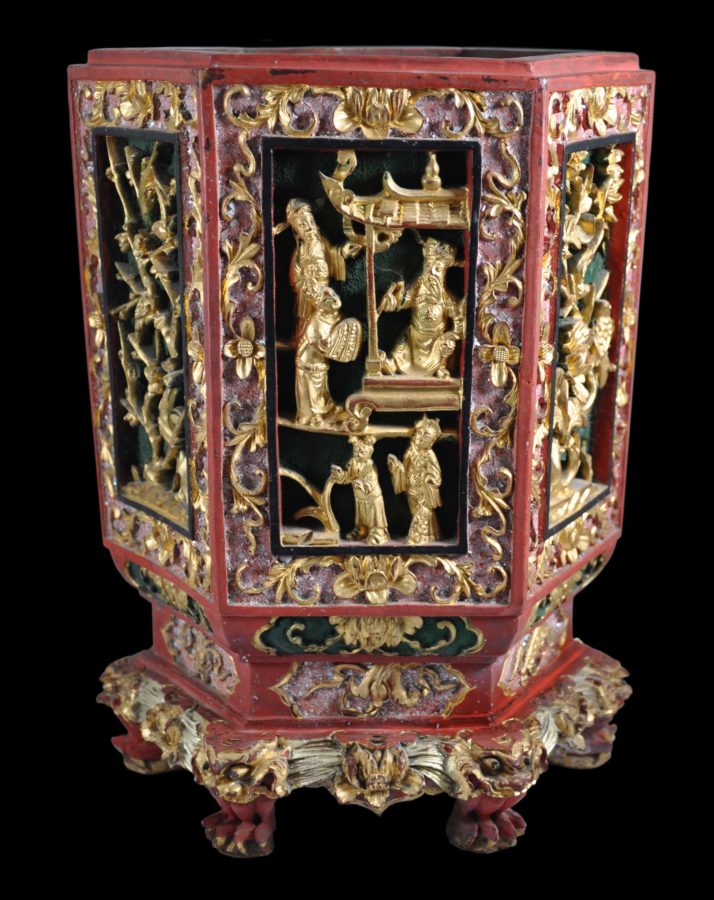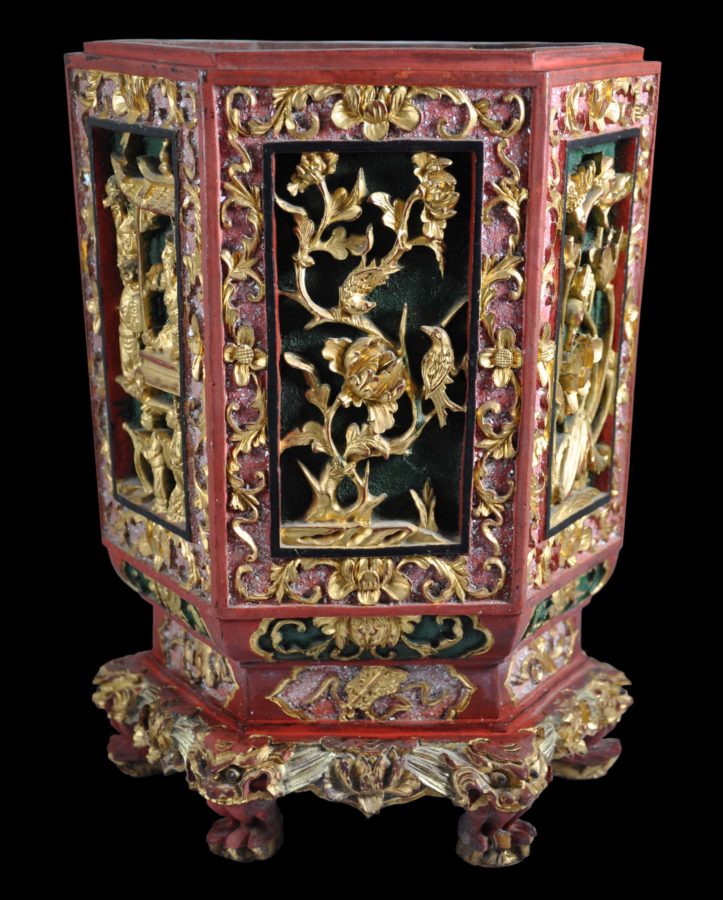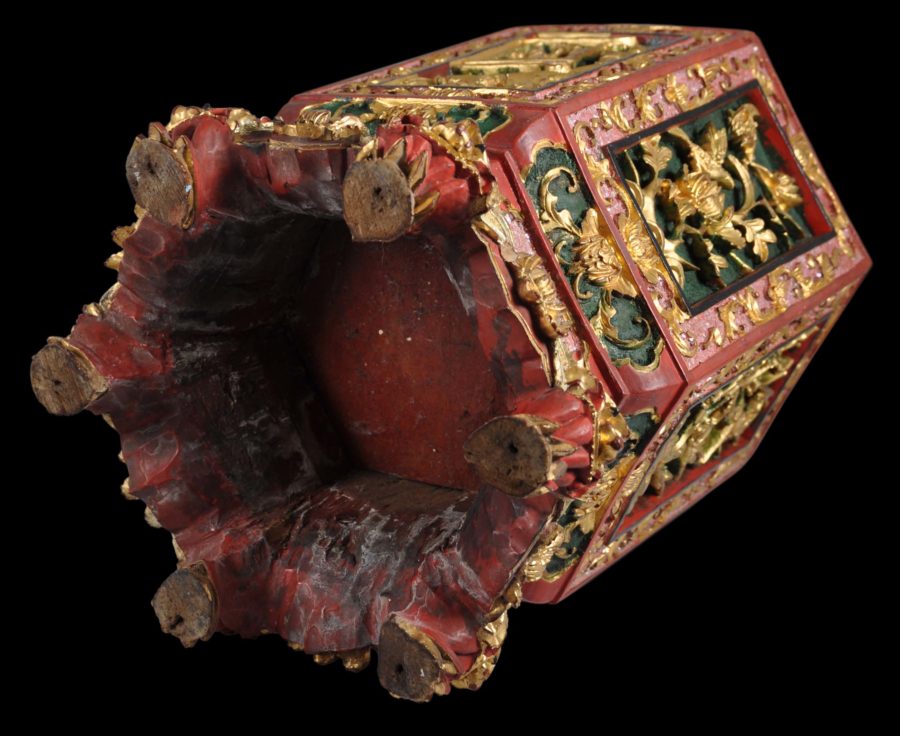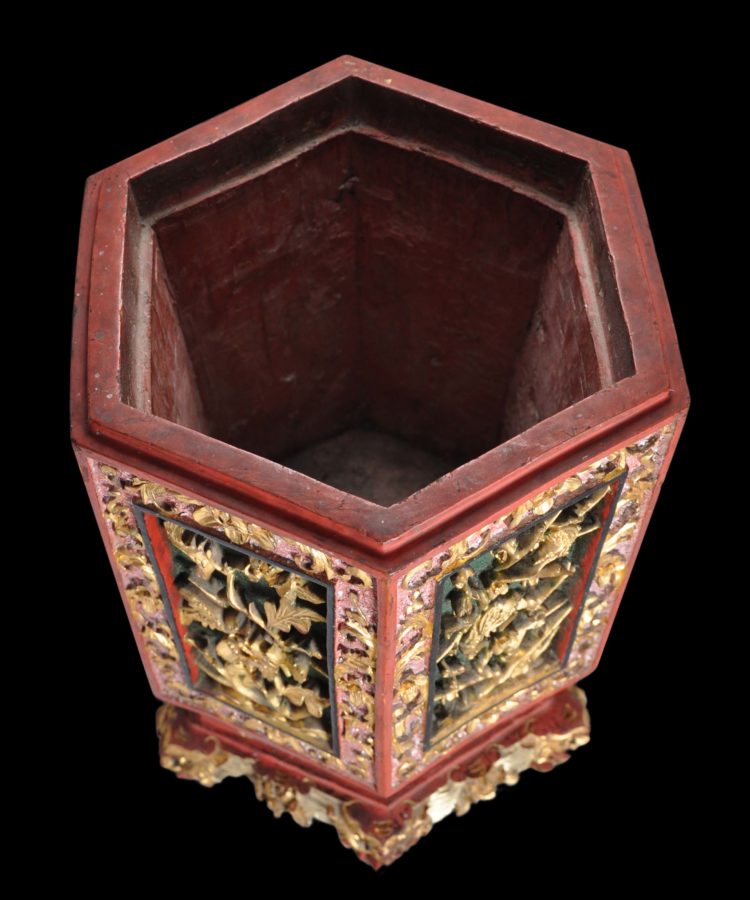This finely carved stand, now missing its lid or cover, is a Fuzhou-style chanab or offering stand used on an altar, most probably in Southeast Asia by local Chinese communities.
It is of unusual hexagonal form, with beautifully carved and gilded panels on each of the six sides.
It has a well-carved lower register from which six carved feet emerge.
The chanab was placed in the centre of what was called in a Straits Chinese home, the sam kai altar, the most important altar in the family home. The sam kai altar was used for important ceremonies, particularly weddings. The chanab served as a platform on which upright bamboo skewers of crystallised papaya were placed as altar offerings.
The condition of the chanab here is excellent, other than that the cover is now missing. The cover would have sat in the well of the chanab. The chanab is very decorative nonetheless.
References
Khoo J.E., The Straits Chinese: A Cultural History, Pepin Press, 1996.
Ho, W.M., Straits Chinese Furniture, Times, 1994.
Tan, C.B., Chinese Peranakan Heritage in Malaysia and Singapore, Penerbit Fajar Bakti, 1993.
Lee, P. and J. Chen, Rumah Baba: Life in a Peranakan House, National Heritage Board, Singapore, 1998.


